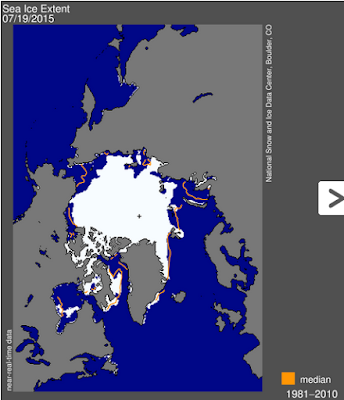Remarkably, it appears that the Northeast Passage may be ice free by the end of July 2015, based on images posted by the National Snow and Ice Data Center. The early melting of the sea ice that usually blocks the Northeast Passage is a result of the warming of the Arctic. If the sea ice along the Northeast Passage continues to melt as rapidly as it has over the past week, it may be the earliest in the summer during recorded history that this route has been ice free and navigable without the need for an icebreaker.
 |
| Northeast Passage in Red |
As shown in the image below, the Northeast Passage is on the verge of becoming ice free (as of July 19, 2015).
Regardless of whether 2015 is a record setting year for earliest opening of the Northeast Passage, the rapid ice melt provides another indication that we live on a warming planet. It may only be a matter of decades before the Northwest and Northeast Passages through the Arctic are navigable from August through October.
